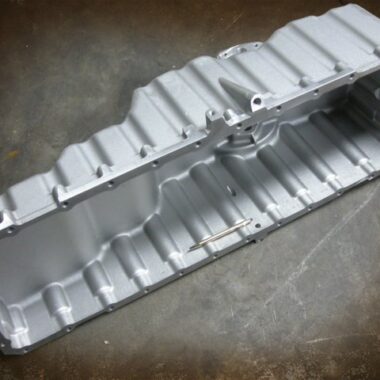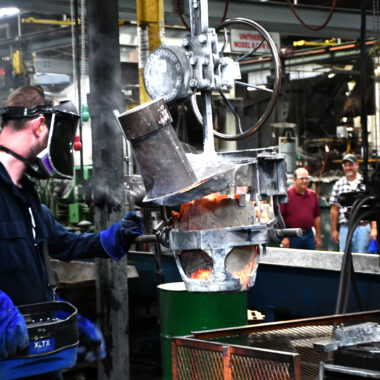Aluminum Casting Mastery: Approaches to Raise Your Manufacturing Process
Wiki Article
The Top Methods for Aluminum Spreading That You Need to Know
In the realm of aluminum casting, precision and proficiency are vital. Comprehending the subtleties of different casting methods can considerably affect the high quality and efficiency of the end product. From the typical sand spreading method to the intricate financial investment spreading procedure, each strategy offers special benefits that satisfy different job needs. As we navigate via the leading strategies for light weight aluminum spreading, it comes to be noticeable that understanding these methods is vital for achieving optimal outcomes. Allow's check out the details of these techniques and just how they shape the world of light weight aluminum spreading.Sand Casting Technique
The Sand Casting Technique is an essential method in light weight aluminum casting, widely utilized for its cost-effectiveness and adaptability in producing detailed metal forms. This technique includes creating a mold and mildew constructed from compressed sand right into which liquified light weight aluminum is poured, permitting it to solidify and take the form of the mold and mildew. Among the key benefits of sand spreading is its ability to produce complicated geometries with fairly low tooling expenses, making it an eye-catching alternative for producers aiming to develop special components.In the sand spreading process, a pattern of the last component is pushed right into a fine sand mixture contained within a flask. Once the pattern is gotten rid of, a dental caries representing the final component's shape is left in the sand. Molten light weight aluminum is after that put right into the dental caries, taking and filling the space on the exact details of the pattern. After the aluminum strengthens and cools down, the sand mold and mildew is damaged away, exposing the freshly cast aluminum part. Sand casting is frequently used in various markets, including automotive, aerospace, and art shops, due to its ability to generate both big and small metal parts with complex designs.

Financial Investment Casting Refine
A complex approach used in light weight aluminum casting is the Investment Casting Refine, understood for its capability to create extremely detailed and intricate metal elements. Referred to as the lost-wax spreading process, this strategy dates back thousands of years and continues to be a preferred choice in different markets due to its adaptability and accuracy.The financial investment casting procedure starts with the development of a wax pattern, which is covered with a ceramic covering to create a mold and mildew. The wax is then thawed out, leaving a tooth cavity in the form of the wanted part. Molten light weight aluminum is poured right into the ceramic mold and mildew, loading the cavity and taking on the elaborate details of the initial wax pattern.
This method is favored for its capability to generate complex forms with superb surface finish and dimensional accuracy. It is generally used in the production i loved this of aerospace elements, precious jewelry, and industrial equipment where elaborate layouts are needed. The investment casting procedure supplies have a peek at this site high repeatability and can generate get rid of marginal machining needed, making it an affordable choice for many applications.
Irreversible Mold And Mildew Method
Utilizing a different approach from the Investment Casting Process, the Permanent Mold and mildew Approach in aluminum casting offers a distinctive strategy for producing metal parts. The warm transfer from the liquified metal to the mold aids in solidifying the light weight aluminum quickly, lowering the cooling time compared to sand spreading.One of the crucial benefits of the Permanent Mold Technique is the boosted surface coating and dimensional accuracy of the castings produced. This technique is also known for its ability to generate high-strength aluminum parts with regular high quality. Furthermore, the recyclable nature of the mold and mildew makes it a cost-effective alternative for medium to high quantity manufacturing runs.
Die Casting Innovation
Making use of advanced manufacturing procedures, die casting innovation presents an extremely efficient technique for creating detailed light weight aluminum parts. This method entails infusing liquified light weight aluminum into a steel mold and mildew, called a die, at high pressures. The die is specifically made to shape the light weight aluminum into the preferred form, resulting in high precision and excellent surface finish.
Pass away casting offers numerous advantages. It enables the production of complicated forms with thin walls, tight tolerances, and smooth surface areas, making it suitable for applications where aesthetic appeals and precision are critical. Additionally, pass away casting enables rapid manufacturing rates, reducing total manufacturing time and prices.

Lost Foam Casting Method
Die casting modern technology's performance and accuracy in producing light weight aluminum elements lead the way for exploring the Lost Foam Casting Technique as a complementary manufacturing method. Lost Foam Casting, likewise called evaporative pattern casting, is a method that utilizes foam patterns to develop elaborate light weight aluminum components. This procedure entails creating a foam pattern that is coated with a refractory product to form a covering. The layered foam pattern is after that buried in sand, and molten light weight aluminum is put into the mold, vaporizing the foam as it moves in and takes its shape.One of the key benefits of Lost Foam Spreading is its ability to produce complex styles with detailed details that might be testing to attain via conventional casting techniques. As sectors continue to require lightweight yet sturdy parts, Lost Foam Casting proves to be a valuable approach in the world of light weight aluminum casting.
Verdict
Finally, comprehending the top methods for aluminum casting is vital for attaining high-grade outcomes in the production process. Sand spreading, financial investment casting, irreversible mold, pass away casting, and lost foam casting are all efficient techniques for generating aluminum components with different levels of intricacy. By mastering these techniques, makers can guarantee that their items satisfy the preferred specifications and requirements for performance and longevity.
From the standard sand spreading approach to the intricate investment spreading procedure, each technique uses one-of-a-kind advantages that provide to different project needs.The Sand Spreading Method is a basic method in light weight aluminum spreading, widely used for its cost-effectiveness and convenience in developing complex metal forms. Lost Foam Casting, additionally known as evaporative pattern casting, is an approach that makes use of foam patterns to develop elaborate aluminum components. As sectors continue to demand light-weight yet sturdy components, Lost Foam Casting verifies to be a useful approach in the world of aluminum casting.
Sand casting, financial investment spreading, permanent mold, pass away spreading, and shed foam casting are all efficient approaches for creating aluminum parts with various degrees of complexity.
Report this wiki page